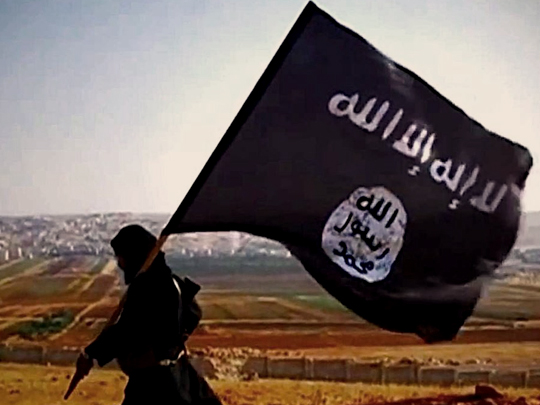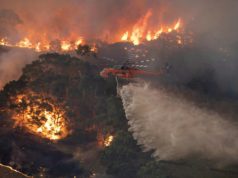Photo credit: VOA/Wikimedia
1 – ISIS Takes Control Over Large Parts of Iraq & Syria
ISIS (the Islamic State of Iraq and Syria) is a jihadist militant group that follows a fundamentalist, Salafi doctrine of Sunni Islam.
From early 2014, the group came to global prominence when it drove Iraqi government forces out of key cities in its Western Iraq offensive, followed by its capture of Mosul and the massacre of up to 5,000 Yazidi men in Sinjar.
ISIS became widely known for distributing videos of beheadings and other types of executions of soldiers, civilians, journalists, and aid workers, and the destruction of numerous invaluable cultural heritage sites.
The United Nations holds ISIS responsible for human rights abuses and war crimes, having committed ethnic cleansing on an unprecedented scale in northern Iraq.
In June 2014 the group proclaimed itself a worldwide caliphate and began referring to itself as the Islamic State (IS), claiming religious, political, and military authority over all Muslims worldwide.
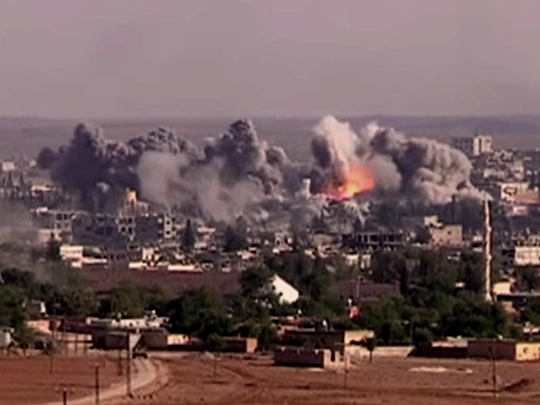
By December 2015, ISIS had taken control of an area containing as many as 12 million people, stretching from western Iraq to eastern Syria, and enforced its version of sharia law.
At their peak, ISIS was believed to be operational in 18 countries across the world, with a force of more than 30,000 fighters.
In July 2017, the group lost control of Mosul, its largest city, to the Iraqi army. Following this huge loss, they continued to lose territory to state and military forces allied against it, until it controlled no meaningful territory by November 2017.
On 10 December 2017, Iraq’s Prime Minister Haider al-Abadi said Iraqi forces had driven the last of the Islamic State forces from the country, three years after ISIS had captured a third of Iraq’s territory.
In March 2019, the group lost their last major stronghold when their tent city in Al-Baghuz Fawqani was captured, marking the end of ISIS-controlled territories in Syria.
2 – Israel Launches a Ground Offensive into Gaza Following an Increase in Tensions
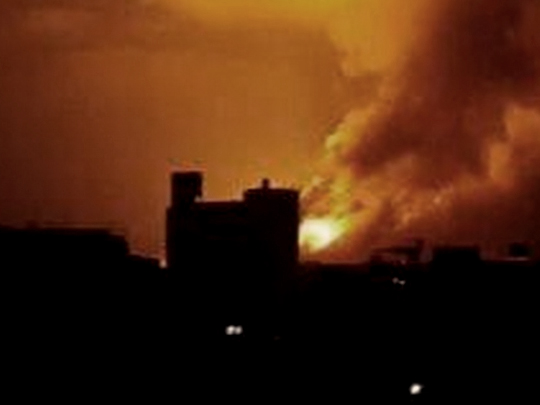
Operation Protective Edge was a military operation launched by Israel on 8 July 2014 in the Hamas-ruled Gaza Strip, during the ongoing Israel–Gaza conflict.
Israel’s stated aim was to stop rocket fire from Gaza, which had increased after an Israeli crackdown on Hamas in the West Bank was launched after the 12 June kidnapping and murder of three Israeli teenagers.
Meanwhile, Hamas hoped international pressure would help lift Israel’s blockade of the Gaza Strip, end Israel’s offensive, guarantee compliance with a ceasefire, the release of Palestinian prisoners, and overcome its political isolation.
Following the kidnapping and murder of three Israeli teenagers by Hamas members, the IDF arrested militant leaders, Hamas responded by firing rockets into Israel, and a seven-week conflict broke out.
On 7 July, after seven Hamas militants died in a tunnel explosion in Khan Yunis, Hamas assumed responsibility for rockets fired into Israel and launched 40 rockets towards Israel.
Operation Protective Edge officially began the following day, and on 17 July, the operation was expanded to an Israeli ground invasion of Gaza with the stated aim of destroying Gaza’s tunnel system. Israeli ground forces withdrew on 5 August.
On 26 August, an open-ended ceasefire was announced.
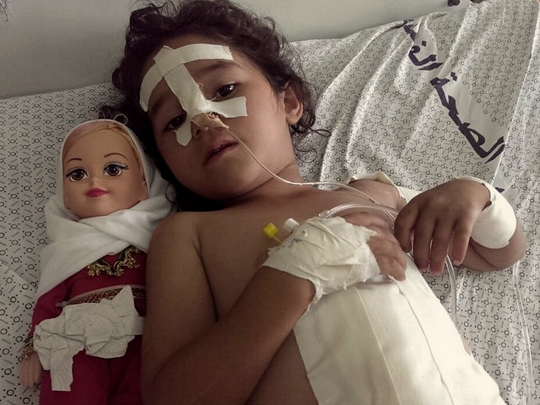
The Israeli airstrikes and ground bombardment, along with Palestinian rocket attacks and ground fighting, had resulted in the deaths of thousands of people, largely from Gaza.
Up to 2,310 Gazans were killed and up to 10,895 were wounded (including over 3,300 children, with over 1,000 left permanently disabled).
The UN estimated that more than 7,000 homes were destroyed, with another 89,000 homes damaged. The IDF had attacked over 5,000 targets in Gaza, with at least 34 known tunnels destroyed.
67 Israeli soldiers, 5 Israeli civilians (including one child) and one Thai civilian were killed, while 469 IDF soldiers and 261 Israeli civilians were injured.
3 – Unrest in Ukraine – Crimea is Annexed by Russia
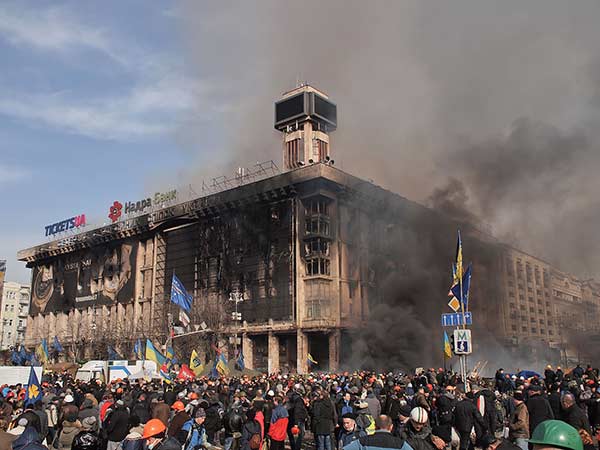
A prolonged crisis in Ukraine began on 21 November 2013 when the then-president of Ukraine Viktor Yanukovych suspended preparations for the implementation of an association agreement with the European Union.
The decision sparked mass protests from supporters of the agreement, ultimately sparking a revolution that led to Yanukovych being ousting on 23 February 2014.
After Yanukovych’s departure, unrest developed in largely pro-Russian regions of eastern and southern Ukraine, from where Yanukovych had drawn most of his support.
On 26 February, a political crisis ensued as Russia invaded the above regions. Masked Russian troops invaded and occupied Crimean airports and military bases, under orders from Vladimir Putin. Crimea was formally annexed on 18 March.
On 11 April, the Constitution of the Republic of Crimea and City Charter of Sevastopol were adopted in a newly published revision of the Russian Constitution.
Russia’s invasion emboldened the pro-Russian Ukrainians leading to further unrest in the Donetsk and Luhansk regions against the Ukrainian government, with assistance by the Russian military and its special forces.
The World Bank estimates the Ukranian economy contracted by 8% during 2014 as a result of the crisis.
Subsequent economic sanctions imposed on Russia by western nations contributed to the collapse in the value of the Russian rouble, and the resulting Russian financial crisis.
In December 2018, Russia completed a high-tech security fence marking the de facto border between Crimea and Ukraine.
In February 2019, it was estimated that 7 percent of Ukraine’s territory, including Crimea and eastern parts of the Donetsk and Luhansk regions, were under occupation, with up to 13,000 people killed and more than 28,000 wounded in the conflict.
4 – Islamist Militant Group Boko Haram Kidnaps 276 School Girls in Northeast Nigeria
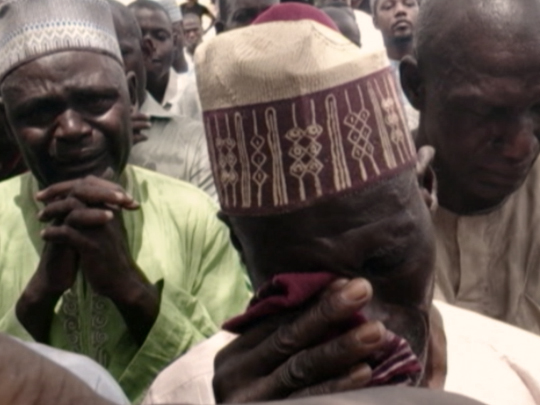
On the night of 14–15 April 2014, 276 female students were kidnapped from a Secondary School in the town of Chibok in Borno State, Nigeria, with terrorist group Boko Haram claiming responsibility for the kidnappings.
In the proceeding months, 57 of the schoolgirls managed to escape, with some describing their capture in appearances at international human rights conferences.
Reports suggested that Boko Haram was hoping to use the girls as negotiating pawns in exchange for some of their commanders in jail.
A lawyer in Abuja, the capital of Nigeria, started the hashtag #BringBackOurGirls, which trended globally on Twitter, helping the story to spread internationally, and attracted 2.3 million tweets within a month.
In response, there was an international outcry, with countries from around the world offering their technological support, expert personnel and assistance.
In May 2016, Amina Ali, one of the missing girls, was found and claimed the remaining girls were still there, but that six had died. A further 22 girls were freed by the end of 2016.
In 2017, 83 more girls were freed, with another girl rescued in January 2018. In 2019, it was estimated that 13 girls were presumed dead, with 112 still missing.
A UNICEF report released on April 2018, claimed that more than 1,000 children have been kidnapped by Boko Haram since 2013.
5 – Riots in Ferguson, Missouri, as an Unarmed Black Teenager is Killed by a Police Officer
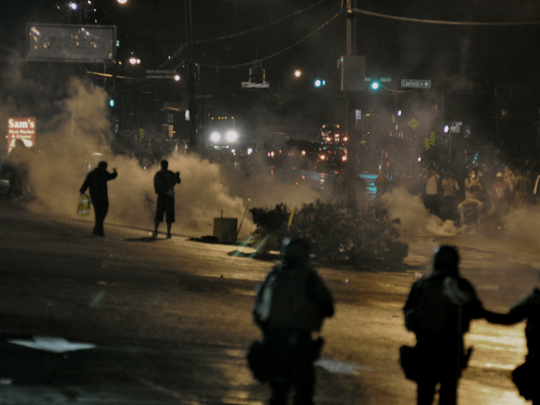
The Ferguson riots began the day after the fatal shooting of 18-year-old Michael Brown by police officer Darren Wilson on 9 August 2014, in Ferguson, Missouri.
The unrest sparked a debate in the United States about the relationship between law enforcement officers and African Americans, the militarization of police, and the use-of-force law in Missouri and nationwide.
As the details of the original shooting emerged, police established curfews and deployed riot squads to maintain order. Along with peaceful protests, there was also significant looting and violent unrest across the city.
The response of area police agencies in dealing with the protests was strongly criticized by the media and politicians, with concerns over their tactics and a militarized response.
The unrest continued on November 24, 2014, after a grand jury did not indict Officer Wilson. In March 2015, the U.S. Department of Justice concluded Wilson shot Brown in self-defense, with forensic evidence also supporting the officer’s account.
In response to the shooting and unrest, the U.S. Department of Justice conducted an investigation into the policing practices of the Ferguson Police Department.
In March 2015, the DOJ announced that they had determined the FPD had engaged in misconduct against the citizenry of Ferguson by among other things discriminating against African Americans and applying racial stereotypes.
6 – Ebola Outbreak in West African Countries Causes Thousands of Deaths
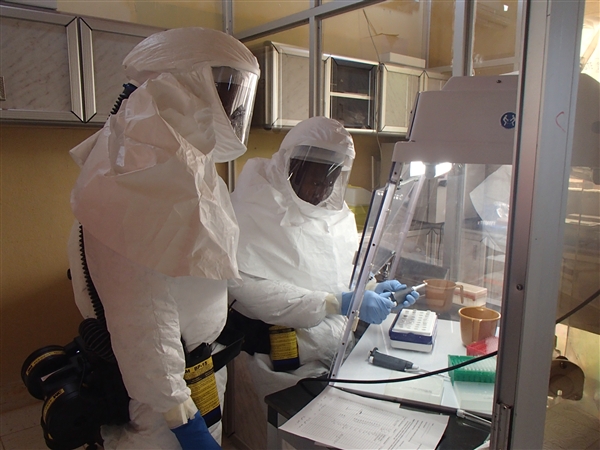
The Western African Ebola epidemic was the most widespread outbreak of the Ebola virus in history. It caused major loss of life and socioeconomic disruption in the region, mainly in the countries of Guinea, Liberia, and Sierra Leone.
The first cases were recorded in Guinea in December 2013; later, the disease spread to neighboring Liberia and Sierra Leone, with minor outbreaks occurring elsewhere. On 8 August 2014, a Public Health Emergency of International Concern was declared.
It caused significant mortality and a case fatality rate of 40%, with over 11,300 confirmed deaths. The number of cases peaked in October 2014, before beginning to decline following the commitment of considerable international resources.
The outbreak left about 17,000 survivors of the disease, many of whom report post-recovery symptoms, often severe enough to require medical care for months or even years.
An additional cause for concern is the apparent ability of the virus to hide in a recovered survivor’s body for a period of time before becoming active months or years later, either in the same individual or in a sexual partner.
On 29 March 2016, the WHO terminated the Public Health Emergency of International Concern status of the outbreak.
7 – Malaysia Airlines Flight MH370 Mysteriously Disappears Over the Indian Ocean
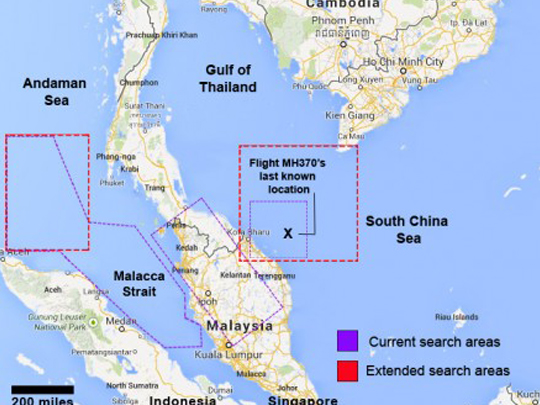
Malaysia Airlines Flight 370 was a scheduled international passenger flight that disappeared on 8 March 2014 while flying from Kuala Lumpur International Airport to Beijing Capital International Airport.
The crew of the Boeing aircraft last communicated with air traffic control (ATC) around 38 minutes after takeoff when the flight was over the South China Sea.
The aircraft was lost from ATC radar screens soon after but was tracked by military radar for another hour, deviating westwards from its planned flight path. It left radar range 200 nautical miles (370 km) northwest of Penang Island in northwestern Malaysia.
With all 227 passengers and 12 crew presumed dead, the disappearance of Flight 370 was the deadliest incident involving a Boeing 777 and the deadliest in Malaysia Airlines’ history at the time.
The subsequent search became the most costly in aviation history. Analysis of the aircraft’s automated communications with an Inmarsat satellite identified a possible crash site somewhere in the southern Indian Ocean.
The lack of official information in the days immediately after the disappearance prompted fierce criticism from the Chinese public, particularly from relatives of the passengers, with most people on board of Chinese origin.
During 2015 and 2016, a number of pieces of marine debris were confirmed to be from the aircraft after being washed ashore in the western Indian Ocean. However, a 3-year search across 120,000 square kilometers of ocean failed to locate the aircraft.
The Joint Agency Coordination Centre suspended its search activities in January 2017. A second search launched in January 2018 by the private contractor Ocean Infinity also ended without success after six months.
The Malaysian Ministry of Transport’s final report in 2018 was inconclusive but highlighted Malaysian air traffic controllers’ failures to attempt to communicate with the aircraft shortly after its disappearance.
Among the report’s safety recommendations were increased battery life on underwater locator beacons, lengthening of recording times on flight data recorders and cockpit voice recorders, and new standards for aircraft position reporting over the open ocean.
8 – Thailand Army Chief Gen. Prayut Announces He Has Seized Power in a Coup
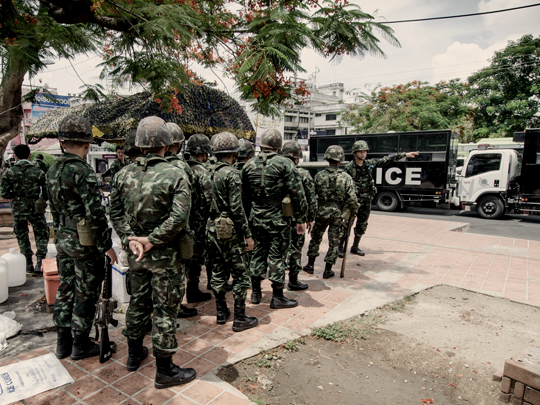
On 22 May 2014, the Royal Thai Armed Forces, led by General Prayut Chan-o-cha, Commander of the Royal Thai Army, launched a coup d’état, against the caretaker government of Thailand, following six months of political crisis.
The military established a junta called the National Council for Peace and Order (NCPO) to govern the nation. It was the 12th coup since the country’s first coup in 1932.
After dissolving the government and the Senate, the NCPO entrusted executive and legislative powers in its leader and ordered the judicial branch to operate under its directives.
It also partially repealed the 2007 constitution, with the exception of the second chapter which concerns the king.
The NCPO then declared martial law and a nationwide curfew, banning political gatherings, arrested and detained politicians and activists, imposed Internet censorship, and took control of the media.
They issued an interim constitution granting itself amnesty, prior to establishing a military-dominated national legislature, which unanimously elected General Prayut as the new prime minister of the country.


